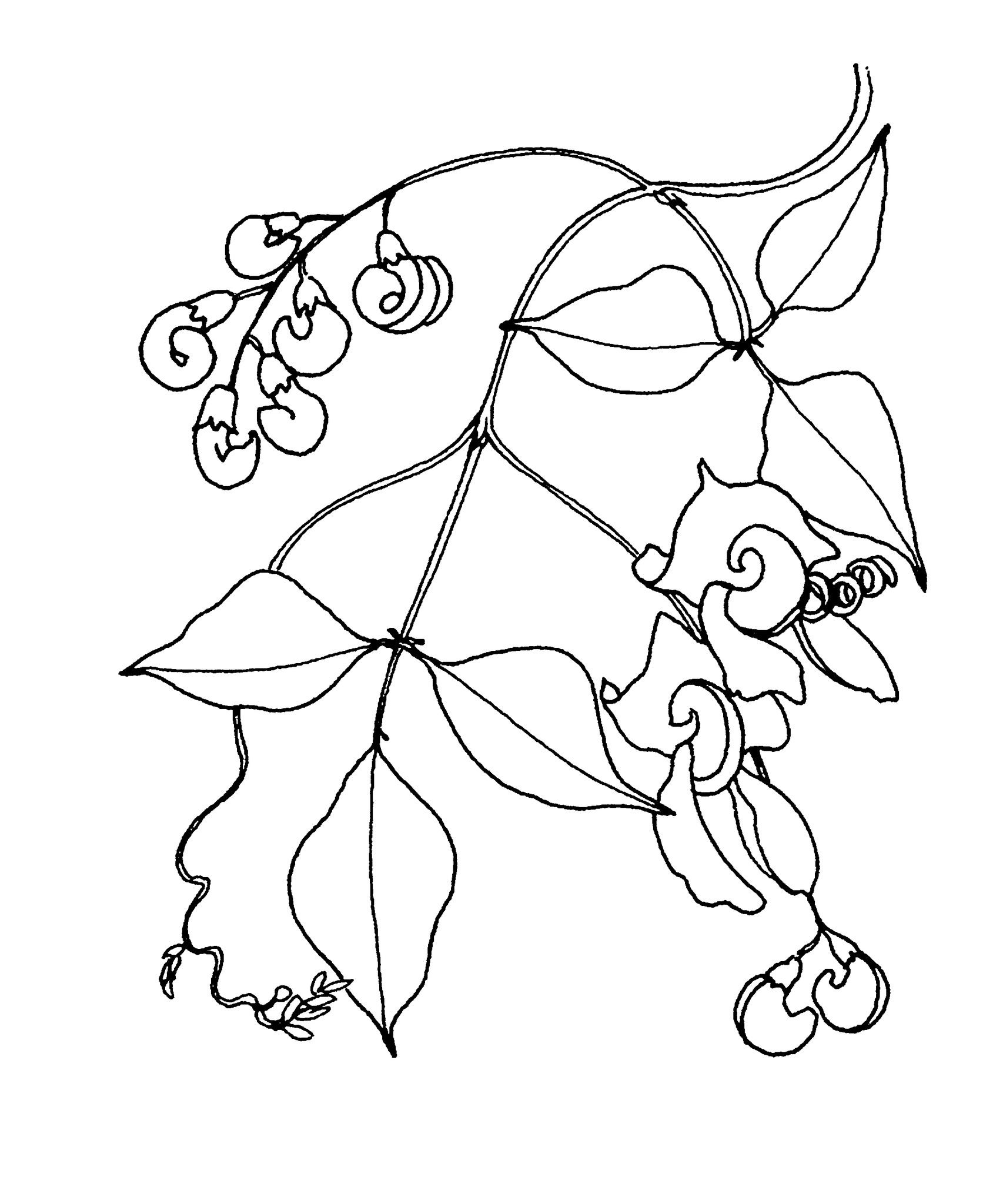
Commemorating Dominico Vigna (d. 1647), Professor of Botany at Pisa, Italy.
Twining or creeping herbs. Leaflets 3, ovate to elliptic, pinnately arranged. Flowers often on long stalks, yellow, white or purple; standard often 'eared' at the base, the keel and upper style incurved and often twisted, upper stamen free. Fruit pod linear, straight or curved.
Grown ornamentally as the Snail Vine.
About 150 species from Asia, S USA, S and C America and tropical Africa.
Seed.
V. angularis (Willd.) Ohwi &Ohashi, Adzuki Bean, is cultivated in Asia for the beans that are boiled or made into a curd. V. radiata (L.) Wilcz., Mung Bean, is not known in the wild but possibly originated in India, spreading to S China and Indonesia before being widely cultivated in the tropics. It is available as the cultivars 'Big Buff', 'Emerald' and 'Green Diamond' and is grown for the edible seeds and pods, and the seedlings which are sold as 'bean sprouts'. V. unguiculata (L.) Walp. subsp. sesquipedalis (L.) Verdc., Asparagus Bean, is widely cultivated in tropical Asia for the pod which is almost 1m long; it is available in Australia as the cultivar 'Holstein'.
Leaflets 3, pinnately arranged; thick part of style twisted through less than 360°.
Source: (2002). Fabaceae. In: . Horticultural Flora of South-eastern Australia. Volume 3. Flowering plants. Dicotyledons. Part 2. The identification of garden and cultivated plants. University of New South Wales Press.
